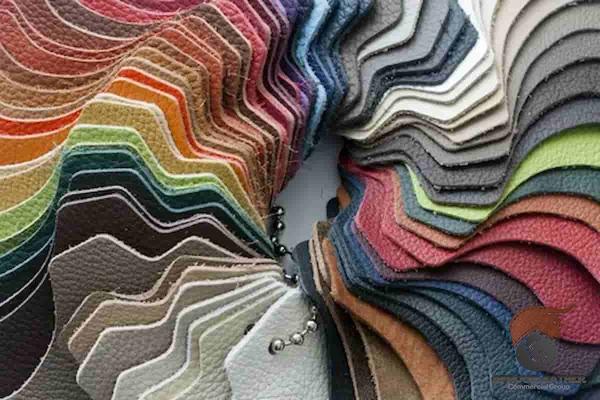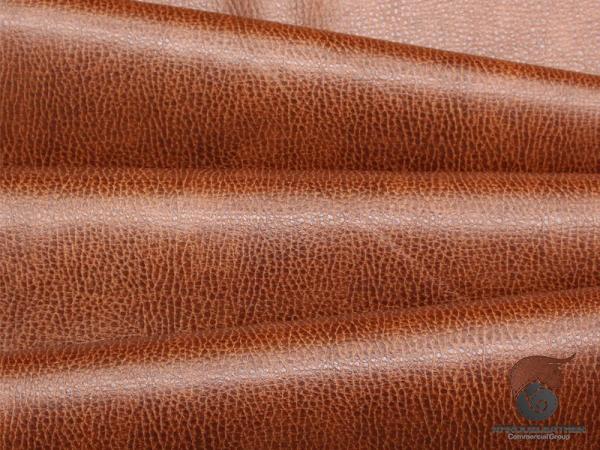Sheepskin is a natural, versatile, and highly sought-after material with various applications in the fashion, home decor, and automotive industries. It is prized for its softness, durability, and insulation properties. Raw sheepskin is the unprocessed form of this material, and its sale plays a crucial role in meeting the demand for sheepskin products. This article provides a comprehensive summary of the raw sheepskin market, examining its uses, processing methods, global trade, industry trends, and factors influencing the sale of raw sheepskin. Uses of Raw Sheepskin: Raw sheepskin serves as a primary input material for manufacturing a diverse range of products. In the fashion industry, it is commonly utilized in the production of luxury garments, shoes, gloves, and bags. The unique properties of sheepskin, such as breathability and moisture-wicking capabilities, make it desirable for both fashion and functional purposes. Additionally, raw sheepskin is also utilized in the automotive industry for car seat covers, steering wheel covers, and interior upholstery due to its exceptional cushioning and heat-insulating qualities.
leather
 Moreover, the home decor sector utilizes sheepskin in the creation of rugs, cushions, and throws to add a touch of natural warmth and luxury to living spaces. Processing Methods: To prepare raw sheepskin for commercial sale, it undergoes a series of processing steps. The initial stage involves the removal of flesh and excess fat from the skin, followed by cleaning and washing to eliminate dirt, blood, and any residual chemicals. The skins are then treated with sheepskin-specific chemicals to prevent deterioration and ensure softness and flexibility. This process, known as pickling, helps preserve the natural features of the skin while preparing it for further tanning or manufacturing. After pickling, the wool and skin are separated, with both components undergoing separate processing. This enables the highest quality wool and skin to be utilized for their respective applications. Global Trade and Market Trends: The global market for raw sheepskin is driven by the rising consumer demand for sheepskin products in various industries. Regions such as New Zealand, Australia, the United Kingdom, and China are major exporters of raw sheepskin due to their large sheep farming industries. The United States, Europe, and Asia Pacific are key importers, with these regions experiencing significant growth in demand for sheepskin products. Growing awareness of the eco-friendliness and sustainability of sheepskin products, combined with an increasing disposable income among consumers, has contributed to the thriving market for raw sheepskin.
Moreover, the home decor sector utilizes sheepskin in the creation of rugs, cushions, and throws to add a touch of natural warmth and luxury to living spaces. Processing Methods: To prepare raw sheepskin for commercial sale, it undergoes a series of processing steps. The initial stage involves the removal of flesh and excess fat from the skin, followed by cleaning and washing to eliminate dirt, blood, and any residual chemicals. The skins are then treated with sheepskin-specific chemicals to prevent deterioration and ensure softness and flexibility. This process, known as pickling, helps preserve the natural features of the skin while preparing it for further tanning or manufacturing. After pickling, the wool and skin are separated, with both components undergoing separate processing. This enables the highest quality wool and skin to be utilized for their respective applications. Global Trade and Market Trends: The global market for raw sheepskin is driven by the rising consumer demand for sheepskin products in various industries. Regions such as New Zealand, Australia, the United Kingdom, and China are major exporters of raw sheepskin due to their large sheep farming industries. The United States, Europe, and Asia Pacific are key importers, with these regions experiencing significant growth in demand for sheepskin products. Growing awareness of the eco-friendliness and sustainability of sheepskin products, combined with an increasing disposable income among consumers, has contributed to the thriving market for raw sheepskin.
Specifications of leather
 Industry Challenges and Opportunities: The sale of raw sheepskin is not without its challenges. The overall profitability of sheep farming and sheepskin businesses can be sensitive to factors such as fluctuations in global raw material prices, the availability of suitable grazing land, and changing government regulations on farming practices. Additionally, concerns over animal welfare and the use of chemicals in the processing of sheepskin have gained attention in recent years, prompting businesses to adopt more sustainable and ethical practices. However, these challenges present opportunities for market players to differentiate themselves by promoting transparency and sustainability throughout the supply chain. Companies that prioritize traceable and ethically-sourced sheepskin can tap into the growing demand for eco-conscious products, attracting environmentally-conscious consumers. Additionally, investing in research and development to explore innovative uses of sheepskin in emerging industries, such as healthcare and sports, can further bolster the market. Factors Influencing Raw Sheepskin Sale: Several key factors impact the sale of raw sheepskin. Firstly, shifts in consumer preferences and fashion trends heavily influence the demand for sheepskin-based products, which in turn affects the demand for raw sheepskin. Secondly, economic factors, such as GDP growth, disposable income levels, and exchange rates, play a significant role.
Industry Challenges and Opportunities: The sale of raw sheepskin is not without its challenges. The overall profitability of sheep farming and sheepskin businesses can be sensitive to factors such as fluctuations in global raw material prices, the availability of suitable grazing land, and changing government regulations on farming practices. Additionally, concerns over animal welfare and the use of chemicals in the processing of sheepskin have gained attention in recent years, prompting businesses to adopt more sustainable and ethical practices. However, these challenges present opportunities for market players to differentiate themselves by promoting transparency and sustainability throughout the supply chain. Companies that prioritize traceable and ethically-sourced sheepskin can tap into the growing demand for eco-conscious products, attracting environmentally-conscious consumers. Additionally, investing in research and development to explore innovative uses of sheepskin in emerging industries, such as healthcare and sports, can further bolster the market. Factors Influencing Raw Sheepskin Sale: Several key factors impact the sale of raw sheepskin. Firstly, shifts in consumer preferences and fashion trends heavily influence the demand for sheepskin-based products, which in turn affects the demand for raw sheepskin. Secondly, economic factors, such as GDP growth, disposable income levels, and exchange rates, play a significant role.
buy leather
 A strong economy leads to an increase in consumer spending power, which positively impacts the demand for sheepskin products and subsequently drives the sale of raw sheepskin. Furthermore, changes in government regulations and trade policies can impact the export-import dynamics of raw sheepskin, directly impacting its sale. Conclusion: Raw sheepskin plays a crucial role in meeting the growing demand for sheepskin products across various industries. Its versatility and unique properties make it highly sought-after for fashion, automotive, and home decor applications. The global market for raw sheepskin is influenced by changing consumer preferences, economic factors, and evolving regulations. However, challenges such as price fluctuations and ethical concerns also provide opportunities for businesses to innovate and cater to the demand for sustainable and eco-friendly products. By understanding the market trends, challenges, and factors influencing the sale of raw sheepskin, industry players can make informed decisions to capitalize on the opportunities and ensure the continued growth of this thriving market.
A strong economy leads to an increase in consumer spending power, which positively impacts the demand for sheepskin products and subsequently drives the sale of raw sheepskin. Furthermore, changes in government regulations and trade policies can impact the export-import dynamics of raw sheepskin, directly impacting its sale. Conclusion: Raw sheepskin plays a crucial role in meeting the growing demand for sheepskin products across various industries. Its versatility and unique properties make it highly sought-after for fashion, automotive, and home decor applications. The global market for raw sheepskin is influenced by changing consumer preferences, economic factors, and evolving regulations. However, challenges such as price fluctuations and ethical concerns also provide opportunities for businesses to innovate and cater to the demand for sustainable and eco-friendly products. By understanding the market trends, challenges, and factors influencing the sale of raw sheepskin, industry players can make informed decisions to capitalize on the opportunities and ensure the continued growth of this thriving market.

Your comment submitted.